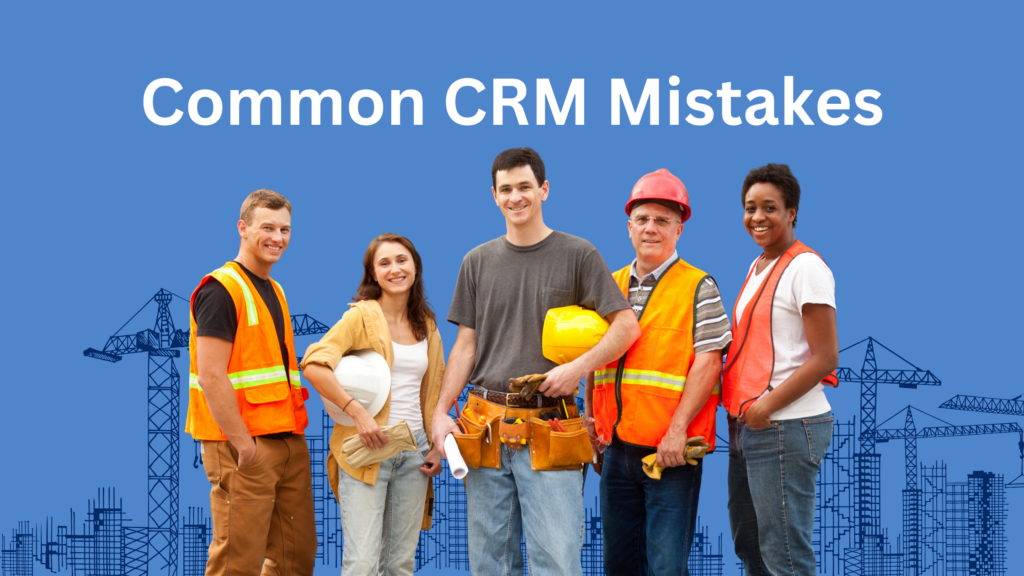
Introduction
Max Fatouretchi says:
“The work of a CRM architect is very much like the work of an architect who is designing the structures of a conventional building. This is perhaps the best way to describe what a successful CRM design looks like. Much like a traditional architect, a CRM architect also needs to address elements such as security, usability, portability, performance, and regulations.”
Building a deeper and closer relationship with customers is critical to the success of any business in today’s world. Economic fundamentals, increased competition, stricter regulations, digital disruptors, demanding customers, mobility, and price sensitivity are all shifting power away from companies and toward customers.
The person who is just starting their construction CRM journey should ask the key stakeholders where they want to go with it, how they see the outcome, what their expectations are, and what role they will play.
Three Pillars of CRM
The architect’s primary role is to design a solution that not only meets the needs and requirements of all stakeholders but also provides agility and structure for a good foundation that supports future business needs and extensions, similar to how the Taj Mahal has changed its role over time while remaining robust and with low maintenance costs.
After understanding the drivers and requirements, you are ready to define the critical properties that the system must have to identify and characterize each scenario. Always keep in mind that a CRM rollout in a company will have an impact on everyone. Above all, it must support business strategies by increasing operational efficiencies, enabling business orchestration, and improving customer experience across all channels.
There are three main pillars for CRM implementation:
- Operational CRM: The operational CRM focuses on marketing, sales, and service functions. Later in this chapter, we’ll look at some case studies from various projects I’ve worked on that cover a wide range of applications.
- Analytical CRM: The analytical CRM will use data from the operational CRM to provide users and business leaders with individual KPIs, dashboards, and analytical tools that will allow them to slice and dice data about business performance as needed. This is the foundation for business orchestration.
- Collaboration CRM: The partnership CRM will provide the technology to integrate all types of communication channels and frontends with core CRM for both internal and external users, including employees, partners, customers, and so-called bring-your-own-device (BYOD). This includes support for various types of devices that can integrate with a CRM core platform and be managed using the same tools and infrastructure, including security and maintenance. The emphasis is on leveraging the core entities and data while using the same platform, authentication procedures, and workflow engine.
7 CRM tips
1. Centralized Customer Database
The information technology revolution, which includes telecommunications, data storage and retrieval technologies, and the World Wide Web, has shifted the business firm’s focus from production efficiency to customer needs. Construction CRM success is dependent on selecting activities that involve data handling, and complex modeling, and require less subjectivity/human intervention.
Technological Tools used
- Electronic Point of Sale (EPOS): The most significant advantage of EPOS and retail scanner systems is the amount of timely and accurate information they provide. Technological advancements have greatly expanded the scope of data analysis.
- Sales Force Automation: These systems aid in the automation and optimization of sales processes, thereby shortening the sales cycle and increasing sales productivity. They allow the company to track and manage all qualified leads, contacts, and opportunities throughout the sales cycle, as well as customer support.
- Customer Service Helpdesk: These applications assist the company in automating customer support processes, allowing it to provide high-quality service to its customers. It keeps track of the status of customer inquiries and stores all support calls and related communications until they are resolved, constantly updating the database.
2. Project Tracking and Updates
The company can easily retrieve useful and necessary information by using the construction CRM Tracking System in the Database and Web. Best CRM for construction analysis can assist an organization in developing various selling strategies and programs for various customer levels. For example, a low-value customer can be reached via email or telesales, whereas a potential customer can be reached via face-to-face contact. Thus, CRM tracking can improve customer satisfaction and provide a more effective selling program, thereby increasing both the organization’s and the customer’s value.
3. Lead Management
While software is not the leadership solution, systems can support processes when properly trained and deployed strategically. Lead generation can be costly, and failing to take full advantage of available resources will result in a waste of resources. Lead management has not yet been addressed within the program, but it is supported by functionality in the new cloud-based CRM system, Salesforce, and will thus be migrated there from the legacy platform in the future. Salesforce is widely regarded as a leading provider of CRM solutions.
The best CRM for construction frequently allows for more than one contact person in supplier companies with a large number of customers. All employees who have contact with prospects or customers can share information. This allows more of the supplier’s employees to have access to customer and product information and respond to inquiries more effectively. Potential can be defined based on patterns in past loyalty if each communication can be codified systematically and combined with transactional information about the customer.
| Centralized Information | All customer interactions are logged in one place, online or offline.Facilitates easy tracking of customer visits, calls, web inquiries, and call center claims. |
| Cross-functional Involvement | Multiple people can access and contribute to customer-related information.Increases collaboration and involvement across various teams. |
| Strategic Customer Attention | Enables reporting and prioritization of customers for focused attention.Supports the development of a targeted sales strategy. |
| Customer-focused Strategy | Emphasizes CRM as a mindset and set of processes for successful customer relationship management.Aligns organizational strategy with practical tools and processes. |
| Workflow and Documentation | Communicative CRM systems act as workflow systems, aligning with business processes.Documents the execution of processes for a clear understanding of customer activities. |
| Increased Visibility | Combines data from various sources into the CRM system.Provides a comprehensive view of customer activities for better decision-making. |
| Analytical Capabilities | Utilizes data for creating reports and dashboards.Supports users in data analysis for informed decision-making. |
| Actionable Signals | CRM systems provide signals prompting users to take specific actions.Actions taken serve as indicators of the usefulness of the information provided by the signals. |
4. Contract Renewal Alerts
Contract workflow rules can help flag accounts that are due for contract renewal or identify missing elements that must be filled in for completion. The ability to modify workflows to support multiple contract types can also help sales by providing options for sales to make contract changes on the fly to accommodate changing conditions.
Advanced construction CRM solutions also support “dynamic approvals”-workflows that allow the approval chain to change automatically as contract components change, adding or removing steps and approvers. Process management functionality in contract administration assists administrators in tracking and enforcing obligations as well as monitoring key milestones via automated alerts triggered by business rules. These alerts reduce a variety of issues that contribute to revenue leakages and unrealized savings opportunities, such as missed payments, over and underpayment, billing errors, and contract renewal renegotiation windows that pass during the contract renewal period.
5. Sales
Of course, one goal of sales force automation is to increase revenue. Not only is there a gross increase, but there is also an increase in revenue per salesperson. Another goal is to reduce sales costs by reducing the time salespeople spend on administrative tasks. Furthermore, sales force automation should improve customer retention by strengthening the relationship between the company and the customer, particularly the relationship with the individual salesperson. Another goal is to increase the mobility of the sales force by utilizing the web’s capabilities. Finally, assuming all employees have access to a central database, sales force automation will provide a unified view of the customer.
6. Social Media Management
Social media marketing is a significant factor in developing a construction CRM strategy. CRM considers the customer to be the center of a business and directs marketing policy in that direction. Social media is an important factor in customer purchasing decisions: Customers use social media to research products or services they want to buy. Companies are using social media to expand their communication with customers, which results in better customer interaction.
Customer relationship management is all about getting closer to customers and communicating with them. Communication in this age of new technologies means using social media. Social media is an open diary of likes and dislikes, preferences and dissatisfactions. If getting closer to customers means blogging, Facebook, or Twitter, businesses must adapt to the rise of social media to compete in the market.
7. Automation
A CRM audit, which identifies the business functions that must be automated and lists the technical features required in the construction of CRM software. is the first step towards effective automation at a company. While several audit methodologies are available, we recommend one that includes questionnaires, face-to-face interviews with customer-facing personnel (e.g., anyone who has direct contact with a customer or serves in a support role), face-to-face interviews with customers (if possible), visits with sales representatives in the field as well as sales channel partners, a review of business processes, a technical assessment, and a final report.
Conclusion
It’s critical to remember that every CRM journey begins with either a business strategy or a business pain point. All stakeholders must have a clear understanding of the company’s direction and the business drivers for a construction CRM investment. More importantly, while different business users may have different roles and expectations from the system, everyone must share a common vision for the company.
Furthermore, you will notice that the focus and level of engagement of people involved in a project will change throughout the project’s life cycle. It aids in categorizing team members’ characteristics, ranging from visionaries and leaders to stakeholders and owners. While key sponsors are often the first to actively support and advocate for a construction CRM strategy, they will only define the tactics. End users will eventually take on more responsibility during the deployment and operation phases.
FAQs
How is CRM useful for a company?
A construction CRM system can help you easily and quickly identify and add new leads, as well as accurately categorize them. Sales can prioritize opportunities that will close deals by focusing on the right leads, and marketing can identify leads that require more nurturing and prime them to become quality leads.
How does CRM help in marketing?
CRMs assist businesses in managing their interactions and relationships with customers by centralizing and making this data easily accessible. This centralization makes it simple for sales representatives to find the information they require to make every interaction with a customer meaningful and personalized.
Why is centralized information crucial in CRM systems?
Centralized information ensures that all customer interactions are logged in one place, simplifying tracking and providing a comprehensive view of customer activities.
How does CRM support strategic customer attention?
Construction CRM software enables reporting and prioritization of customers, supporting the development of targeted sales strategies for focused customer attention.
What is the role of automation in CRM, specifically in contract renewal alerts?
Automation in construction CRM software helps flag contract renewals, modifies workflows dynamically, and provides alerts for tracking obligations, reducing revenue leakage and improving contract management efficiency.

